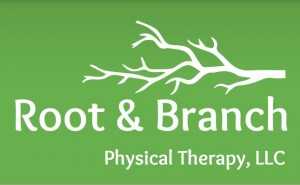Please enjoy a guest post written by the latest addition to Thrive Massage and Bodyworks (the space that Written on the Body resides in).
I have been seeing Dr. Alex de la Paz for the past couple of months to address chronic jaw and neck pain and I have been impressed with his intuitive and gentle style as well as the lasting results we have achieved over just a few visits. This is what inspired me to ask him to write a post for us. Our goal at Written on the Body is to help each of you find freedom from pain and stress and I believe that Alex may be able to help accelerate this process in addition to your regular massage and acupuncture treatments. Bonus that he is a genuinely lovely person AND is located in the same building so you can easily have your health care team all in one place!
When Should I see a Physical Therapist?
Should I stretch before I exercise?
Is it OK to be sore after I exercise?
How do I know if I am developing an injury?
Have you ask yourself one of these questions? Do you exercise and wonder if that “tightness” or “soreness” is a problem? You may be experiencing normal and expected exercise-induced muscle soreness. However, you may be experiencing symptoms associated with an over-use injury, either due to a heightened activity level or a dysfunctional movement pattern. This article provided by Root & Branch Physical Therapy will help identify and differentiate between normal and abnormal responses to exercise, with the intent of informing and empowering the community on the importance of injury prevention and management throughout a lifespan.
“Normal” and “Expected” Soreness
During and after exercise it is expected for muscles to fatigue and feel either “tight,”
“sore” or “achy;” especially if the goal of the exercise is to improve muscle strength and/
or size. This phenomenon is called Delayed Onset Muscle Soreness (DOMS) and could
last 1-3 days after you exercise. Delayed muscle soreness should be expected in the body
part or region of the body that was producing movement or force. For example, if
someone perform exercises involving pushing or pulling motions with their arms, it
would be expected to have muscle soreness in the shoulders, chest and arm regions.
During full-body movement patterns, such as running or playing basketball, global
DOMS is to be expected in areas throughout the entire body, especially after performing
a newly-introduced activity.
“Abnormal” and “Unexpected” Soreness
Even though soreness is an expected outcome of exercising, there are times where
soreness could be a clue to whether or not you are producing a poor movement pattern
and/or developing an injury. Below are some subjective reports that would suggest that
someone is at risk for developing an injury:
• Soreness only on one side of the body
o Potential cause: asymmetrical positioning or muscle function
o Example: only one calf muscle feeling sore or tight after a run
o Our approach: identify why and when the sore muscle may be stressed
during your running pattern
• On-going muscle tightness or joint stiffness
o Potential cause: over- or under-active muscle activity
o Example: sensation of hamstring tension despite stretching and/or foamrolling
constantly
o Our approach: identify if the tension felt is due to soft tissues that are
over-active and short or under-active and long
• Head, face, jaw, neck or spine soreness or stiffness
o Cause: dysfunction of the core, breathing or jaw muscles
o Example: low back pain or headaches during or after specific activities
o Our solution: identify why tension and strain is being distributed at
specific locations during certain activities
Common Regions Involved in Compensation
• Calves and feet, fronts and sides of thighs, front of the hips (hip flexors), low
back area, accessory breathing muscles of the neck, wrists and elbows, face and
jaw muscles and the diaphragm (holding your breath).
If you or anyone you know is experiencing symptoms from the “Abnormal” and
“Unexpected” Soreness category listed mentioned above, then you would benefit from an
injury and movement screen to identify your current risk for developing an injury. Also, if
your commonly experience tension, soreness or pain in the “Common Regions Involved
in Compensation” list above, then you as well should benefit from screening to identify
your injury risk.
Root & Branch Physical Therapy provides FREE 30-minute movement and injury
screens for all individuals. If you indeed are identified as being at risk for injury, you may
benefit from a 90-minute comprehensive Physical Therapy evaluation with a Doctor of
Physical Therapy. Please contact Alex today if you have further questions about how
Physical Therapy might help your specific situation. You may also schedule via phone,
text, email, our website or the MINDBODY app.

Dr. Alex de la Paz, PT, DPT
Owner & Physical Therapist
Root & Branch Physical Therapy
2808 NE MLK Jr Blvd, Ste C
Portland, OR 97212
Cell: (503) 577-0318
Fax: (503) 710-9221
Email: rootandbranchPT@gmail.com
Website: www.rootandbranchPT.com
